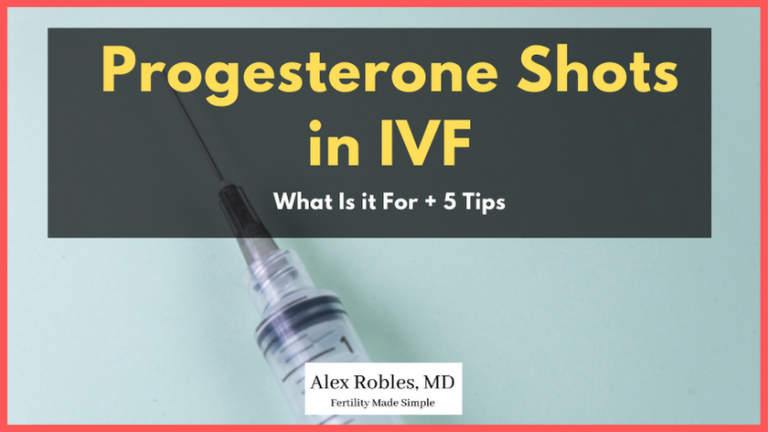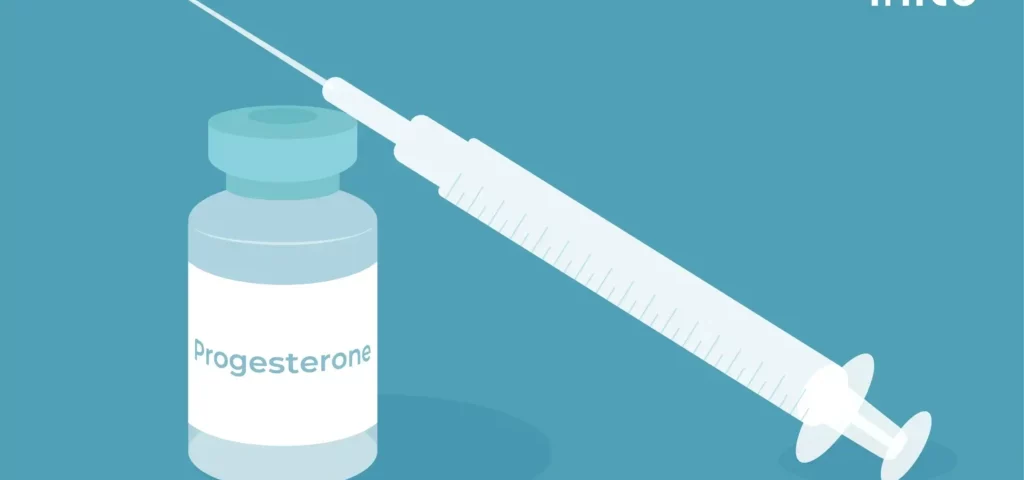
K.L. Backman: The Hidden Connection Between Stress and IVF Success
April 23, 2025IVF Progesterone Shots: Everything You Need to Know to Feel Confident and Prepared
When you’re going through in vitro fertilization (IVF), there’s a lot to wrap your head around—medications, appointments, and emotions that can feel like a rollercoaster. One part of the process that often catches people off guard is progesterone shots. If you’re new to IVF, you might be wondering: What are these shots? Why do I need them? And why does everyone seem to have a love-hate relationship with them? Don’t worry—I’ve got you covered. This guide will dive deep into everything about IVF progesterone shots, from the science behind them to insider tips that’ll make the experience easier. Plus, I’ll sprinkle in some fun facts and real-life hacks that you won’t find in every article out there. Let’s get started!
What Are IVF Progesterone Shots, Anyway?
Progesterone shots are a key player in the IVF game. They’re injections of progesterone, a hormone your body naturally makes, mixed with oil (usually sesame or ethyl oleate) to help it absorb slowly into your muscles. In IVF, doctors prescribe these shots to give your body the boost it needs to support a pregnancy.
Why You Need Them
During a natural pregnancy, after ovulation, your ovaries produce progesterone to thicken your uterine lining, making it a cozy spot for an embryo to implant. But IVF throws a curveball. The medications you take—like GnRH agonists or antagonists—help your ovaries grow lots of eggs, but they also mess with your body’s ability to make enough progesterone on its own. That’s where the shots come in. They step up to:
- Prep your uterus for the embryo.
- Help the embryo stick (implantation).
- Support early pregnancy until your placenta takes over (usually around 8-12 weeks).
Fun Fact Alert!
Did you know progesterone is nicknamed the “pregnancy hormone”? It’s been helping humans (and animals!) carry babies for millions of years. In IVF, we’re just giving Mother Nature a little nudge.
Quick Science Bite
A 2023 study in Reproductive Biomedicine Online found that women who used progesterone shots during IVF had a 34.2% live birth rate, compared to 24.1% for those who didn’t supplement progesterone. That’s a big deal when you’re hoping for a little one!

Why Shots? Exploring Your Progesterone Options
You might be thinking, Shots? Really? Can’t I just take a pill? Great question! Progesterone comes in a few forms for IVF—shots, vaginal suppositories, gels, and even oral pills. So why do so many doctors pick the needle?
Shots vs. the Rest
- Intramuscular Shots: These go deep into your muscle (usually your butt or thigh) and deliver a steady dose of progesterone. They’re super reliable, which is why they’re a go-to for many clinics.
- Vaginal Suppositories or Gel: These are inserted down there and absorbed through your vaginal lining. They’re less invasive but can be messy and need multiple doses a day.
- Oral Pills: Easy to swallow, but they don’t always get enough progesterone to your uterus because your liver breaks it down fast.
Doctors often lean toward shots because they give consistent blood levels of progesterone—crucial for implantation. A fertility specialist I spoke to once said, “Shots are like the VIP pass to a healthy uterine lining. They don’t mess around.”
The Oil Twist
Here’s something quirky: the progesterone in these shots is dissolved in oil. Why? Oil slows the release into your bloodstream, keeping levels steady. But it also makes the injection thicker and trickier to push through the needle—more on that later!
What Fans Are Curious About
Ever wonder why some people swear by shots while others dread them? It’s a mix of preference and side effects. Shots can leave you sore, but suppositories might make you feel like you’re wearing a diaper full of goo. It’s all about what vibe you’re going for!

When Do You Start and Stop Progesterone Shots?
Timing is everything in IVF, and progesterone shots are no exception. Let’s break it down.
Fresh vs. Frozen Transfers
- Fresh Embryo Transfer: You usually start shots the day your eggs are retrieved. Why? Your ovaries are busy recovering from egg collection and can’t pump out enough progesterone naturally.
- Frozen Embryo Transfer (FET): Things get trickier. You’ll start shots a few days before the transfer—typically 2-5 days, depending on your embryo’s stage (day 3 or day 5). This mimics your body’s natural cycle.
How Long Do You Take Them?
Most clinics recommend sticking with progesterone shots for 6-12 weeks after a positive pregnancy test. Why so long? Your placenta needs time to kick in and take over progesterone production, which happens around 8-10 weeks of pregnancy. Some doctors play it safe and extend it to 12 weeks—just in case.
Real-Life Tip
Set a daily alarm on your phone (like 8 p.m.) to remind you. IVF is stressful enough without forgetting a shot! One woman I know even made it a ritual—shot time meant cozy socks and her favorite podcast.

How to Give Yourself (or Your Partner) a Progesterone Shot
Okay, let’s get practical. These shots aren’t your average flu jab—they’re intramuscular, meaning they go deep into your muscle. Don’t panic—I’ll walk you through it step-by-step.
Step-by-Step Guide
- Gather Your Gear:
- Progesterone vial
- Two needles (one to draw, one to inject—usually 18-gauge and 22-gauge)
- Syringe
- Alcohol wipes
- Bandage
- Sharps container
- Pick Your Spot:
- Aim for the upper outer quadrant of your butt—think of splitting your cheek into four imaginary boxes and hitting the top outside one. This avoids nerves and blood vessels.
- Prep the Shot:
- Wipe the vial top with alcohol.
- Use the bigger needle to draw the oil into the syringe (it’s thick, so be patient).
- Switch to the smaller needle for injecting.
- Inject Like a Pro:
- Clean your skin with an alcohol wipe.
- Stretch (don’t pinch!) the skin tight.
- Insert the needle at a 90-degree angle—quick and firm, like darting a dartboard.
- Push the plunger slowly (takes 10-20 seconds because of the oil).
- Pull out and press with a bandage.
- Aftercare:
- Rub the spot to spread the oil.
- Toss the needle in a sharps container—safety first!
✔️ Pro Tips
- Warm the vial in your hands or under your armpit for a minute. Cold oil stings more!
- Use an ice pack on the spot for 5 minutes before injecting to numb it.
- Switch sides daily to avoid soreness buildup.
❌ Avoid These Mistakes
- Don’t inject too low—you might hit a nerve.
- Don’t rush the injection; slow and steady prevents lumps.
- Don’t reuse needles—ouch and infection risk!
A Little Secret
Some folks turn shot time into a bonding moment. One couple I heard about dimmed the lights, played soft music, and took turns giving each other the shot. It’s not just a chore—it’s teamwork!
Side Effects: What to Expect and How to Deal
Progesterone shots aren’t all sunshine and rainbows. They come with side effects, but knowing what’s coming can help you handle them like a champ.
Common Side Effects
- Pain or Swelling: The injection site might feel sore, red, or even form small knots. That thick oil can irritate your muscle.
- Mood Swings: Progesterone can make you feel weepy one minute and cranky the next. Blame the hormone rollercoaster!
- Bloating: You might feel puffy or gassy—progesterone slows digestion.
- Fatigue: Ever feel like napping all day? That’s progesterone talking.
Rare but Real
- Allergic Reactions: Some people react to the oil (sesame is common). Signs include rash, itching, or breathing trouble—call your doctor ASAP if this happens.
- Panniculitis: A fancy word for inflammation under the skin. It’s rare but can happen with repeated shots.
Science Check
A 2019 study in Scientific Reports looked at 3,013 IVF patients and found no big difference in pregnancy success between shot users and vaginal progesterone users—but shot users reported more site soreness. Trade-offs, right?
Coping Hacks
- For Pain: Try a warm compress after the shot to ease stiffness.
- For Mood: Lean on a friend or watch a funny movie—laughter helps!
- For Bloating: Sip peppermint tea or take a short walk.
The Emotional Side: What No One Tells You
IVF is a marathon, and progesterone shots can feel like the steepest hill. Let’s talk about the stuff that doesn’t make it into the pamphlets.
The Love-Hate Vibe
Some days, you’ll feel like a warrior—sticking yourself with a needle for your future baby? Badass! Other days, you’ll dread the clock ticking toward shot time. It’s normal to feel both.
The Partner Dynamic
If your partner’s giving the shot, it can bring you closer—or spark a mini argument if they miss the spot. One woman told me her husband got so nervous he’d sing off-key to distract her. It worked!
Insider Confession
A lot of IVF folks secretly keep a “shot diary.” They jot down how they felt, what song was playing, or even doodle a smiley face for good days. It’s a little thing that makes the process yours.
Latest Research: What’s New in 2025?
Science doesn’t stand still, and neither should your info. Here’s what’s fresh on progesterone shots as of March 2025.
New Findings
- Dose Tweaks: A 2024 study in Frontiers in Endocrinology suggests that lower doses (like 50 mg vs. 100 mg daily) might work just as well for some women, cutting down on side effects. Talk to your doc about tailoring it!
- Combo Power: Some clinics are testing shots plus vaginal progesterone together. Early results show a slight bump in implantation rates—worth asking about.
- Oil Alternatives: Researchers are experimenting with water-based progesterone injections. They’re less thick and might hurt less—still in trials, but exciting!
Expert Insight
Dr. Sarah Thompson, a fertility expert, told me, “We’re learning that one size doesn’t fit all with progesterone. Personalizing the dose and delivery could be the future.”
Busting Myths About Progesterone Shots
There’s a lot of chatter out there—let’s clear up some confusion.
Myth #1: Shots Guarantee Pregnancy
Nope! They boost your odds by supporting implantation, but IVF success depends on tons of factors—like embryo quality and your body’s response.
Myth #2: They’re Super Dangerous
The oil-in-muscle thing sounds wild, but it’s safe when done right. Accidental vein hits are rare and usually just cause temporary discomfort.
Myth #3: You Can Skip Them
Tempting, but risky. Without progesterone, your uterus might not be ready, and miscarriage risk could climb. Stick to the plan!
Your Questions, Answered
I’ve peeked at what people are asking online, and here are the top Qs with straight-up answers.
“Do They Hurt a Lot?”
It depends. Some say it’s a quick pinch; others feel sore for hours. Warming the oil and icing the spot can cut the sting.
“Can I Switch to Pills Mid-Cycle?”
Not without your doctor’s okay. Switching forms can mess with your levels and throw off the process.
“What If I Miss a Shot?”
Don’t panic—take it as soon as you remember, then call your clinic. Consistency matters, but one slip won’t ruin everything.
Beyond the Basics: Unique Tips and Tricks
Here’s where we get creative—stuff you won’t find in every blog.
Make It Fun
- Reward System: Treat yourself after each shot—a piece of chocolate, a Netflix episode, whatever sparks joy.
- Shot Playlist: Curate a vibe—think upbeat tunes or chill lo-fi beats to set the mood.
Hack the Pain
- Massage Trick: Post-shot, use a tennis ball to roll out the muscle. It disperses the oil and eases knots.
- Distraction: Watch a silly cat video while injecting—your brain can’t focus on pain and giggles at once!
Partner Playbook
If your partner’s on needle duty, give them this cheat sheet:
- Practice on an orange first (seriously!).
- Say something sweet before jabbing—like, “You’re amazing for this.”
Long-Tail Keywords, Covered
Let’s weave in those SEO goodies naturally:
- IVF progesterone shots side effects: We’ve tackled pain, mood swings, and more—check above!
- How long to take progesterone shots after IVF: 6-12 weeks, depending on your doc—details in the timing section.
- Progesterone shots for IVF success rates: Studies say 34.2% live births with shots—science backs it up!
- Best way to give progesterone shots IVF: Step-by-step guide above, with pro tips to boot.
The Bigger Picture: Why It’s Worth It
Let’s zoom out. These shots might feel like a hassle—sore hips, daily prep, the occasional tear—but they’re a tiny chapter in a huge story. Every jab is a step toward something you’ve dreamed about. A fertility nurse once said, “Each shot is a little love note to your future kid.” Corny? Maybe. True? Absolutely.
Let’s Chat: Your Turn!
You’ve made it through the mega-guide—high five! Now, I want to hear from you:
- What’s your progesterone shot routine like?
- Got any wild tips or funny stories to share?
- Still got questions buzzing in your head?
Drop a comment below—I’ll reply, promise! Let’s keep this convo going and support each other through the IVF journey.
